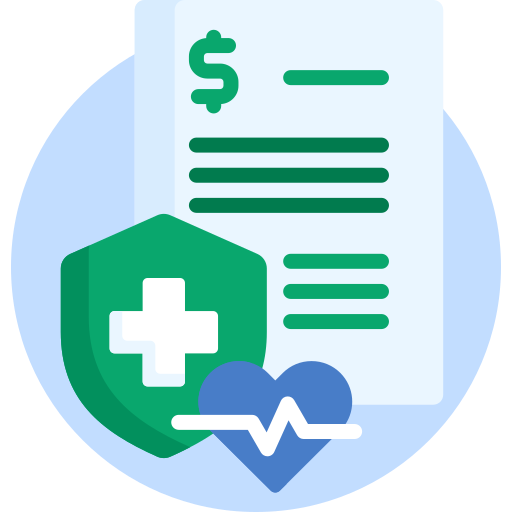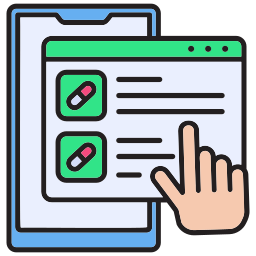Helping Moms Shouldn’t Involve Wasting Time or Resources
Maternal health startups are doing some of the most meaningful work—supporting moms through one of life’s most important journeys. Every moment counts, and so does every dollar.
Many of these teams run remote care models that offer both clinical and emotional support through pregnancy. They're making a real difference. Yet, behind the scenes, they’re still stuck dealing with outdated workflows—manual charge entries, scattered data, and systems that just don’t talk to each other.
We recently spoke with a growth leader at a fast-growing maternal care platform working with large health systems. Their focus right now? Removing manual charge entry into Epic EHR and simplifying how remote patient data gets shared—with less admin work slowing things down.
Here’s what stood out from the conversation—and why solving this issue isn’t as complicated as it might look.
The Problem: Thousands of Manual Entries, Every Single Month
This maternal care platform has built a powerful model. OB practices enroll expecting moms and provide them with home monitoring tools—blood pressure cuffs, fetal heart rate monitors, scales—along with direct support from navigators who understand their culture and context.
The platform collects everything from vitals to mood scores to social and behavioral health data. All of it supports early intervention and better outcomes.
Here’s where things get messy: each of those check-ins leads to billable activity. RPM. CCM. PCM. The works.
Right now, their team compiles a massive file of CPT codes every month and sends it to their provider clients—who then manually enter each charge into Epic.
That process drains time, introduces errors, and slows down how quickly revenue gets recorded.
Related Read: Bridging the Gap in Medical Coding Interoperability: How Healthcare Platforms Can Seamlessly Integrate with EHRs

The Ask: “Can We Push Charges Directly into Epic?”
Short answer: Yes. With the right setup, it’s possible.
The team wanted a way to send charge details straight from their platform into the client’s Epic instance—no more manual entry, no more bottlenecks.
They’re also pulling in a huge volume of data from home devices and wearables. In some cases, providers want that information to flow directly into Epic flow sheets or patient records.
We have previously assisted in the solution of similar difficulties. This is totally up our alley at Mindbowser.
Why the Typical Integration Approach Doesn’t Cut It?
Most teams default to using third-party SaaS middleware to bridge the gap. Sounds convenient at first—but here’s what usually happens:
- You’re stuck with ongoing licensing fees
- Data control shifts out of your hands
- Integrations feel shallow and don’t match real workflow needs
- Any change creates a delay because you’re relying on another vendor.
Instead, we proposed something better: a custom-built integration using Epic’s APIs or HL7/FHIR standards. It’s designed to sit within the client’s system as their own IP.
That means:
- Full control over how charge data flows
- A repeatable setup that works for every new OB clinic
- A foundation that’s ready for future moves—whether that’s Epic Showroom visibility, native app capabilities, or deeper EMR features
Related Read: Epic EHR Explained: How It Transforms Healthcare Operations and Patient Care
What We’re Solving During Discovery (And Why It Matters)
Before writing a single line of code, we mapped out a focused four-week discovery sprint to dig into the details:
- Confirm Epic integration feasibility using its Finance and Billing APIs
- Decide the best path forward—FHIR, HL7v2, or custom scripting
- Identify every billing field needed: patient ID, CPT codes, ICD-10, modifiers, and more
- Sync with Epic’s Customer Service Rep (ECSA) to lock in the right data flow
- Define the data model for daily or real-time RPM billing triggers
This step isn’t about delays—it’s what keeps the build lean, precise, and fast to roll out. We only create what’s truly needed and avoid unnecessary complexity.
What’s After Charge Entry? A Clear Path Toward Smarter Care Coordination
Billing may be the first step—but it’s just the beginning. The conversation quickly moved into what’s possible next:
- Auto-onboarding from Epic referrals—one click to send, auto-fill the patient profile, and trigger welcome kit delivery
- Real-time RPM data syncing straight into Epic charts
- Daily billing powered by Agentic AI that recognizes when claimable events (like 16 RPM days) happen
- Pre-filled forms and flow sheets so OB providers can act fast, without digging through data
All of it points to one clear takeaway: healthcare tech should support care teams—not slow them down.
Why Mindbowser? Because We’ve Done This Before—and Faster
This isn’t new territory for us. We’ve helped teams like Today Health build and scale their RPM and billing engines from the ground up. We’ve worked hands-on with Epic EHR, Cerner EHR, Athenahealth EHR, eClinicalWorks EHR—you name it.
We don’t just hook up systems. We build platforms that are ready to grow.
With our pre-built solution accelerators, hosted FHIR servers, and Epic-ready templates, we typically reduce engineering lift by 30–40% right from the start.
Think of us as your integration team—fully plugged in, problem-solving alongside you, and moving your roadmap forward faster.

Pravin Uttarwar, CTO of Mindbowser
As the CTO of Mindbowser, a healthcare-focused software development company, I am dedicated to delivering cutting-edge digital solutions that transform patient care and operational efficiency. With over 16 years of experience and as an MIT alumnus, I specialize in healthcare interoperability, FHIR-compliant systems, and AI-powered platforms, crafting scalable products and architectures tailored to the unique needs of healthcare providers and enterprises.
I have spearheaded the development of over 100 products and platforms, guiding them from concept to full-fledged solutions. My expertise extends to scaling remote tech teams, driving EHR integrations, and building secure, cloud-native healthcare solutions. By shaping technology visions and roadmaps, I help clients achieve long-term growth and success in the rapidly evolving healthcare landscape.
HealthConnect CoPilot enabled us to access real-time patient health data through integration with Apple HealthKit, enhancing care delivery while maintaining HIPAA compliance. This led to personalized care and improved outcomes for patients.

AI-enhanced Obstetrics Clinical Decision Support Platform
HealthConnect CoPilot's integration with Epic's Hyperspace has transformed our workflow. Automated post-delivery examinations and HL7 protocol use ensure accurate updates to Epic. Their expertise empowers informed decision-making in childbirth

Top Provider for Customized Healthcare Solutions
HealthConnect CoPilot's helped us to integrate with leading tracking devices such as Apple Watches and Fitbit. This integration enables effortless syncing of health data, providing users with real-time insights displayed directly on our flagship products: smart mirrors and digital calendars.

A Provider of Customizable Display Solutions
Post a comment Cancel reply
Related Posts
FHIR Versions: The Past, The Present & The Future
The Fast Healthcare Interoperability Resources (FHIR) standard has revolutionized healthcare data exchange, enabling seamless interoperability…
What Are CDS Hooks? A Simple Guide for Healthcare Providers
CDS Hooks are changing how clinical decision support (CDS) works inside EHRs, bringing real-time, context-aware…
The Challenges and Benefits of EHR Integration for Health Tech Companies
As digital health companies continue to innovate and develop cutting-edge healthcare solutions, one of the…
Streamlining Behavioral Healthcare with Epic EHR Integration
Behavioral healthcare providers are facing an increasing demand for streamlined systems that can integrate multiple…
EHR Integration for Diabetes Management: A Scalable Solution for Modern Healthcare Platforms
Managing chronic diseases like diabetes requires consistent care, personalized treatment, and uninterrupted access to patient…
Medical Coding Interoperability: How Healthcare Platforms Can Seamlessly Integrate with EHRs
The healthcare industry continues to struggle with fragmented medical coding workflows, especially when exchanging structured…








